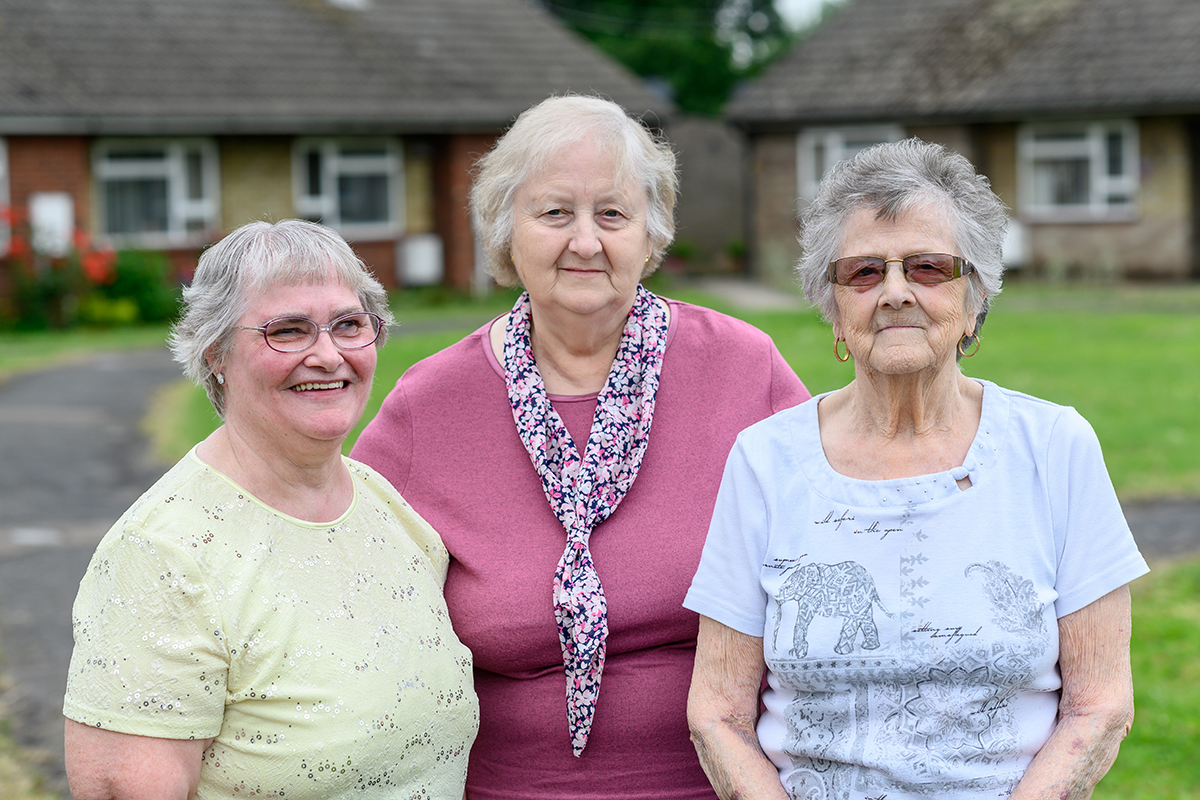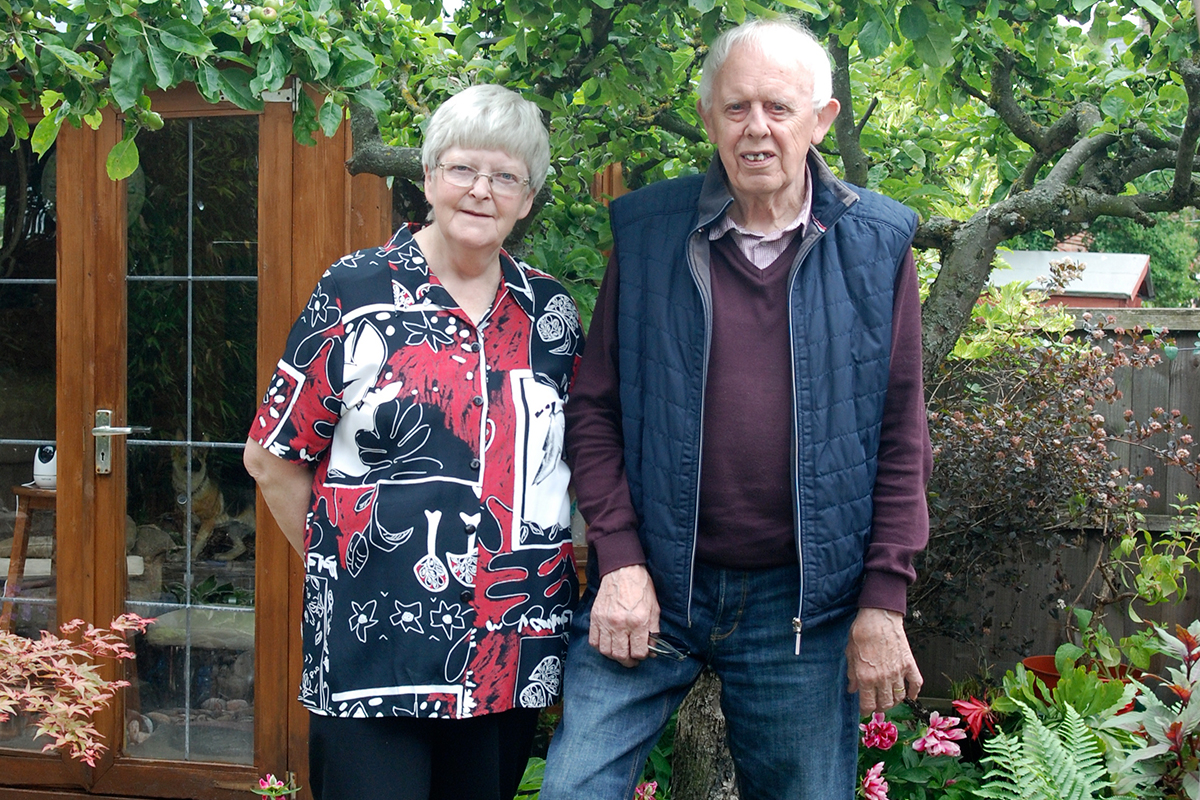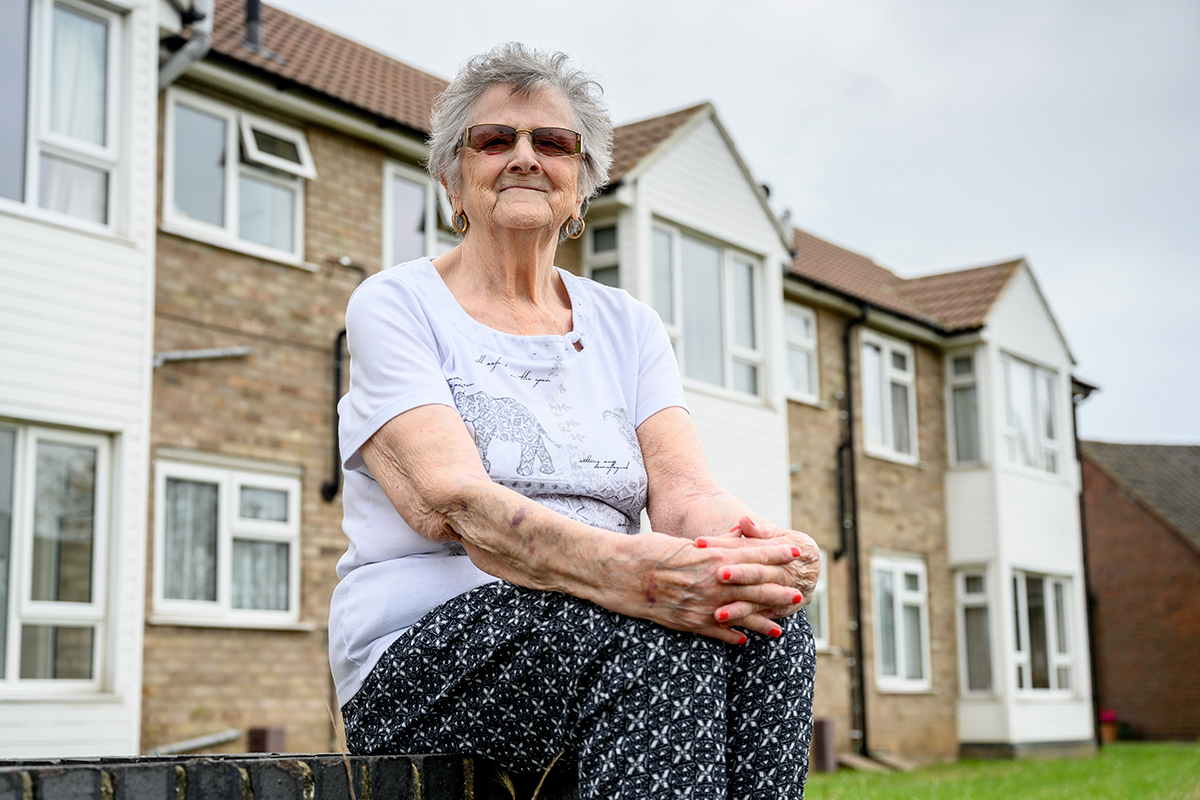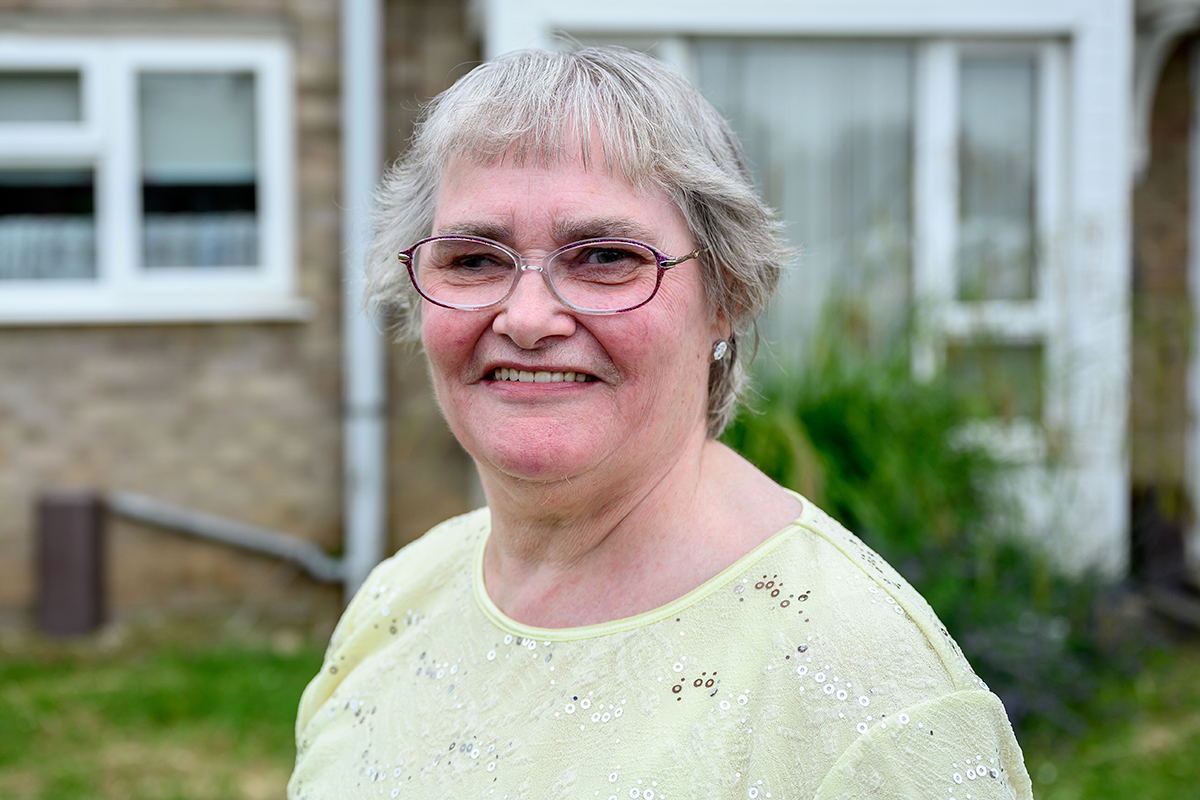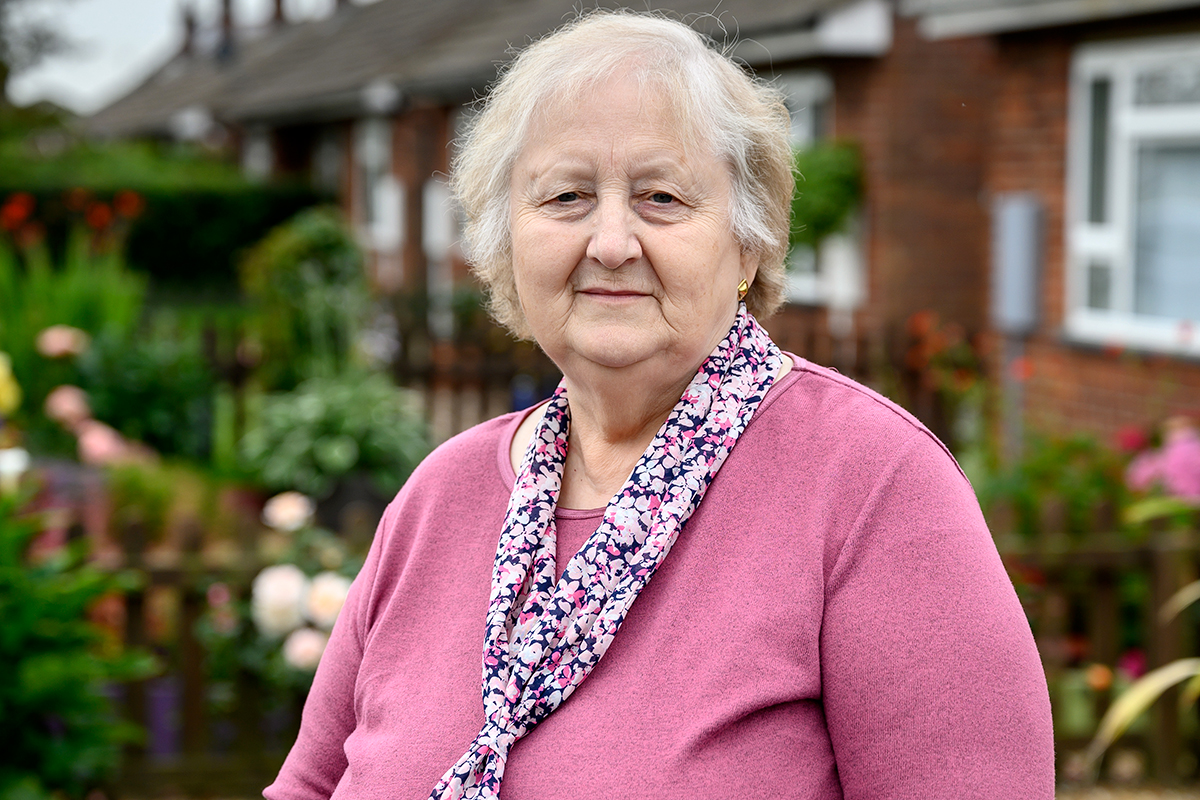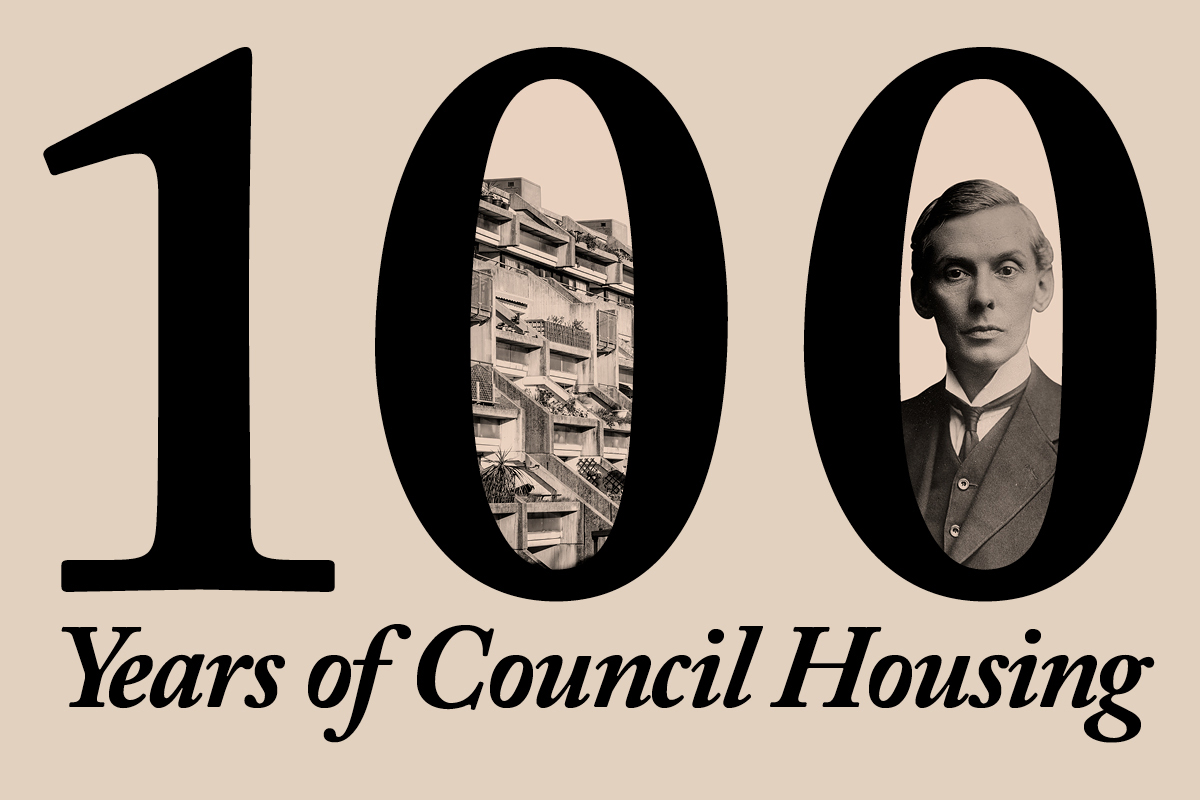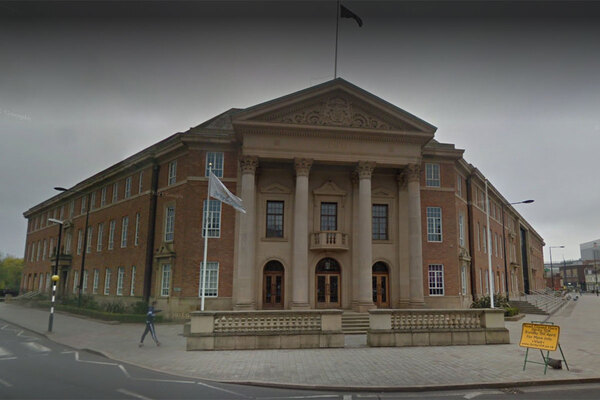You are viewing 1 of your 1 free articles
Memories of council housing: the human legacy of the Addison Act
As the centenary of the first council houses approaches, Peter Apps hears from some of the people who have lived in them in the decades since. Photography by Matthew Usher
Inside Housing is publishing a number of articles this month to mark the 100-year anniversary of the Addison Act, which paved the way for large-scale council housebuilding.
Above: Caroline Pell, 65, Christine Dickinson, 72, and Lillian Tucker, 83, are tenants of South Holland Council and have lived in council housing throughout their lives
It is the oldest cliché in housing, but that does not stop it being true: homes are more than bricks and mortar. Equally, the story of 100 years of council housing is about more than the millions of homes built since the passing of the ‘Addison Act’ – it is written in the memories and experiences of those who lived in these homes.
As Inside Housing marks the anniversary, we seek out some of those stories from the people who have lived in council housing the longest.
In a community centre on a quiet street of bungalows in the village of Pinchbeck, Lincolnshire, Christine Dickinson, 72, introduces us to her friends Lillian Tucker, 83, and Caroline Pell, 65. They are tenants of South Holland District Council and live in a development designed for older residents.
All three have lived in council housing at various times throughout their lives, although they have also been renters and owner-occupiers. Lillian, a proud east Londoner who still speaks with a clear cockney twang, first moved into council housing in De Beauvoir Town, Hackney, with her family as a young girl after World War II. Her father had been posted to France, while she had endured the Blitz and evacuation out of London to the countryside.
Watch a video interview with three of the women from South Holland Council:
“Coming back after the bombing, half the places were still on the floor,” she says. “We got a house from the council and that’s when we got our first indoor bathroom and fridge.”
Christine’s family were also allocated council housing when she was a young girl. They were given a newly built pre-fab in Gosberton, Lincolnshire. “It was like another world,” she says. “We weren’t used to that sort of thing.”
Caroline came to council housing a bit later in life. She was allocated a home in 1985 with her husband, after three years on the waiting list. She recalls her beautiful garden, which her husband took particular care of.
The three friends moved into and out of council housing as their lives progressed. Lillian raised her children in a private rented home, while Christine lived in housing owned by the farm that employed her husband as a foreman.
However, none of them took advantage of the Right to Buy when it became available in the 1980s.
“I don’t believe in it,” says Christine, as Lillian nods. “I think the next generation have got just as much right to a council house as we did. It’s not easy for young people these days.”
Lillian adds: “When I think of where we lived in London, the homes sell for more than a million pounds now. We used to pay £2.50 a week.”
“The next generation have got just as much right to a council house as we did. It’s not easy for young people these days”
Christine Dickinson, South Holland District Council tenant
Both Christine and Lillian held their wedding receptions in their parents’ council houses. Lillian’s was a three-day party from Christmas Eve to Boxing Day when she married her husband Bill, who served in the Royal Navy.
They both mourn the loss of the communities in which they grew up – the sense of safety and the freedom to let children play in the street and leave doors unlocked. They all think more council homes should be built.
“Some people seem to want greenery more than they want houses for people to live in,” Lillian says.
“I don’t know what we would have done without the council house,” Christine says. “My mother was unwell and I don’t think she’d have survived where we were before.”
Una Hancox was a baby when Rotherham’s first council homes were built
The trio in Lincolnshire are just some of the millions of people whose lives have been changed by council housing. Una Hancox was a baby when the foundations of Rotherham’s first council homes were being dug. She moved into her two-bedroom house with her children Kathleen and Michael as a single parent in 1950. She still lives there now, 69 years on.
Una remembers the strong sense of community: “It was a relatively new house with a lovely garden in a quiet street. I worked at the chemist in the high street. I knew lots of people. It was a very nice place to bring up children.
“There were allotments at the end of the garden. We used to swap a cup of tea for a few vegetables with the gardeners and the children used to help them water their plants.”
Today, Una still enjoys the company of her neighbours. “I take in parcels for people and Bob next door comes in to fix things now and then. I have very much enjoyed living here and I still do.”
Down the road, Hilary Cook, 70, talks to Inside Housing from the three-bedroom council house in which she was born. The family have lived there since the 1930s, when Hilary’s grandfather moved in just 18 months after it was built.
Hilary and Dave Cook bought their property through Right to Buy
Hilary says the family is “especially blessed” to live in the home, which has a view at the back across acres of open playing field. She recalls the “immense freedom” of her childhood when she would leave the house in the morning and not return until teatime, spending the day in the Bluebell Wood or Clifton Walk, or – as a teenager – the coffee bars and YMCA dance floors of the thriving city.
She moved out when she was 18 and entered the Ministry of Defence, where she met her husband who worked in the Royal Air Force. The couple started running newsagents and eventually moved back to Rotherham in 1989 to care for her mother after her father died.
“I’m not precious about owning my own home. It wasn’t about that. We just wanted to live here”
Hilary Cook, former council tenant
As she was not a resident, Hilary would not have inherited the home from her mother, so the family went through the newly established Right to Buy process and purchased the property outright.
“I’m not precious about owning my own home,” she says. “It wasn’t about that. We just wanted to live here. I used to come back to Rotherham a lot when I was away – this house was always home. When you came back through that door, you always got that wrap-around feeling that you were home.”
She says she is particularly fond of the garden. Her father and grandfather were both gardeners, and she says when she tends to her garden, she can still hear the echo of her father, 30 years after his passing, saying: “Don’t plant there – that’ll never grow there.”
Lillian Tucker reminisces about her life in council housing
Janet Issom, 69, recalls her family first moving into council housing in 1958 when she was a young girl. Previously, the family of five had lived in a watermill, sharing a bedroom and washing in a tin bath in the kitchen. When they were driven out by a flood, they were placed in council housing in the tiny village of Oulton in Staffordshire. She and her siblings would play outside in the road in the close-knit community.
“My mum was in seventh heaven,” she says. “They were so grateful to have somewhere to live.”
Throughout her life, Janet moved into and out of council housing. She joined the army as a chef and met her husband there, but when they left the forces, they went back into council housing. They purchased the house through Right to Buy when it became available, but Janet found herself and her four children homeless again when they could not keep up with mortgage payments. The family went into a bed and breakfast – now in Hurst Green in Surrey.
“I had quite an ill child. He was only a baby and he was in and out of hospital,” she tells Inside Housing. “It was really difficult, trying to raise four children in a B&B.”
In the end, she was placed back into council housing and raised her family there. Now, she is a council tenant in a bungalow, with eight grandchildren and seven great-grandchildren, and one more on the way. “I was lucky,” she says. “It’s harder now, especially for people who are young with kids. They should stop selling it off and do what they were always supposed to do: put people on low incomes in there.”
Through all these stories and all these lives runs a common thread: the availability of homes for families who needed them. For 100 years, this is what the houses that were built as a result of one piece of legislation have offered. And that, beyond anything else, is its legacy.
To read more about the act, go to: www.insidehousing.co.uk/AddisonAct
100 Years of Council Housing: we want to hear from you
To mark the 100th anniversary of the act receiving Royal Assent in July, we have a month of special activities planned, including interviews with senior council housing figures, exclusive debate and comment, and investigations into what local authorities, past and present, are doing to help provide housing.
This will signal the start of a stronger focus on local authority housing issues over the coming months on www.insidehousing.co.uk and in our weekly print and digital editions.
We want to hear from you about your local authority is doing to mark the Addison Act and about the housing issues in your area, email: editorial@insidehousing.co.uk
Sign up to receive the latest housing news straight to your inbox through our exclusive Council Focus bulletin
If you are already a subscriber click here to manage your newsletter sign-ups
Click here to read more about our activity to mark the Addison Act
100 Years of Council Housing: what Inside Housing is doing
One hundred years ago, a piece of legislation led to the birth of council housing. Gavriel Hollander introduces Inside Housing’s celebration of the centenary of the Addison Act.
It is so ingrained in our national consciousness that it is hard to imagine just how radical the idea of local authority built and funded housing must have seemed a century ago. Before World War I, almost all housing in the UK was built by private developers (albeit with some notable municipal exceptions in major cities). Given this, it is unsurprising that both quality and consistency of delivery were variable.
The post-war introduction of subsidies for councils to solve the blight of slum estates was supposed to right a wrong and – in the words of then-prime minister David Lloyd George – provide “homes fit for heroes”.
The so-called Addison Act – the very first housing act passed in this country, named after its sponsor Dr (later Lord) Christopher Addison – received royal assent exactly 100 years ago this month.
It may never have achieved its aspiration of delivering 500,000 homes (something that may sound familiar to modern-day watchers of government housing policy) but it was the start of a movement.
New estates began to crop up across the country, built in accordance with recommendations from the Tudor Walters Report, which was produced to parliament in November 1918. This built on the ‘Garden City Principles’ and suggested a number of improvements to the standard of public housing. These included limiting the length of terraced-housing blocks, mandating a minimum number of rooms and providing indoor bathrooms.
“The post-war introduction of subsidies for councils to solve the blight of slum estates was supposed to right a wrong and – in the words of the prime minister David Lloyd George – provide ‘homes fit for heroes’”
Although the abandonment of subsidy in 1921 and a change of government the following year curtailed the immediate growth of council-built housing, the seed had been sown.
This month Inside Housing celebrates the centenary of the Addison Act with a month-long series of articles looking at how it transformed the social fabric of the country and created the housing sector we know today.
Over the course of this month, we visit four estates, each symbolising a different era of council housebuilding. We also take a look at whether new-found financial freedom for local authorities could be the catalyst for a new generation of estates.
To kick off the series, acclaimed social historian John Boughton visits one of the first estates made possible by Lord Addison’s historic legislation: Sea Mills in Bristol. We then travel to Stevenage to look at how the damage to Britain’s inner cities during the Blitz led to the new town movement and a fresh wave of estates through the 1950s and 1960s.
Martin Hilditch, editor of Inside Housing, takes a trip to Hulme in Manchester to examine how the private and public sector had to work together in the 1980s to deliver a regeneration project, which is still thriving more than 30 years later.
Finally, we go to Nottingham and look at one council with grand ambitions to provide housing to a new generation of tenants.
There may still be myriad challenges to face when it comes to providing good-quality, genuinely affordable housing for those most in need, but without the passing of an act of parliament 100 years ago, the sector we work in today may never have come to exist. That alone is worth celebrating.
To read more about the act, go to: www.insidehousing.co.uk/AddisonAct
More on the Addison Act
How George Clarke is aiming to end the housing crisis with his new TV show Architect George Clarke has long been a passionate campaigner for more – and better – council housing. As Inside Housing celebrates 100 years of the Addison Act, Martin Hilditch meets a man on a mission
100 Years of Council Housing: your tweets from week three Our favourite #100yearsofcouncilhousing tweets from the past seven days as our Addison Act activity moves into its fourth week
Nottingham's new wave Robyn Wilson goes to Nottingham to see what the next generation of council homes are set to look like.
If we’re going to have another 100 years of council housing, Right to Buy has to go The Right to Buy is having a devastating effect on the availability of council housing in this country and must be scrapped, writes Lee Sugden
What next for council housing? To celebrate the centenary of the Addison Act, Inside Housing asks a group of housing experts what can be learned from its legacy (sponsored)
Thatcher's legacy: a brief history of the Right to Buy An engine for social change or a handbrake on council development? We look at why the Right to Buy is as divisive as ever #ukhousing
A history of council housing: a timeline From the Addison Act to prefabs, slum clearance and the Right to Buy, council housing in the United Kingdom has a long and colourful history. Carl Brown looks at how it has evolved over time
Council housing: the key to a more equitable and dynamic society As the 100th anniversary of the Addison Act approaches, we publish an abridged extract of a book by Chris Matthews chronicling the history of council housing in Nottingham
Addison’s framework was scrapped but its legacy is more important than ever The fortunes of council housing have ebbed and flowed ever since Addison’s programme was abruptly halted in 1921, writes Jules Birch
Hulme: the redevelopment project that changed regeneration The redevelopment of Hulme in Manchester kick-started a new approach to regeneration in the UK – and the careers of some of housing’s best-known figures. Martin Hilditch joins them on a step back in time with lessons for today.
100 Years of Council Housing: your tweets from week two We pick our favourite #100yearsofcouncil housing tweets over the past week
Memories of council housing: the human legacy of the Addison Act As the centenary of the first council houses approaches, Peter Apps hears from some of the people who have lived in them in the decades since
Many of the sector’s current leaders began their journeys in council teams One hundred years of council housing has delivered a generation of sector leaders as well as millions of council homes, writes Mervyn Jones
Stevenage: home of the new town revolution Stevenage was the first of the post-war ‘new towns’. Gavriel Hollander visits the town to see how it has changed.
100 Years of Council Housing: your tweets from week one Inside Housing has been encouraging councils to say what they are doing to build homes and to mark 100 years of council housing. Here we feature a selection of your tweets
Kit Malthouse: 'Council housing is coming back with a vengeance' Housing minister Kit Malthouse tells Martin Hilditch why growing numbers of councils are looking to get back into development
Sea Mills: we visit one of the first estates to benefit from the Addison Act Social historian John Boughton visits a place in Bristol still cherished today
The Housing Podcast: is council housebuilding about to make a comeback Nearly 100 years after the introduction of the Addison Act, which kick-started the building of the first council estates in the UK, the Housing Podcast team examines the state of council housebuilding today
Why the 100th anniversary of the Addison Act should spark a council housing comeback Let’s make 2019 the start of a renaissance of council housing, writes Martin Hilditch
Are new borrowing freedoms sparking a revival of council housebuilding? The Addison Act marked the birth of council housebuilding. A century later, could recent financial freedom spark a renaissance? Nathaniel Barker investigates.
How Cornwall is taking inspiration from Christopher Addison Cornwall Council is one of many keeping the legacy alive, writes Kate Kennally.
The Addison Act - celebrating 100 years of council housing This year marks the 100th anniversary of the Addison Act – which paved the way for council housebuilding on a large scale. Inside Housing has a whole month of special activity planned and we want to hear your stories
The 100-year anniversary of the Addison Act means it’s time to talk about council housing Let’s use the 100th anniversary of council housing as we know it to flag up some of the great work that’s been done – and kick-start a conversation about the future, writes Martin Hilditch
London must recapture the housebuilding ambition of the Addison Act Councils are committed to development but are still facing unfair restrictions, writes Darren Rodwell of London Councils
Marking 100 years since the ‘Addison Act’ Professor Mark Swenarton writes about the Homes Fit for Heroes Centenary Conference
More council news
Council tenants on Universal Credit 16 times more likely to abandon tenancies
Council to claw back 260 Right to Buy homes
Local authorities accuse government of ‘sleight of hand’ over post-Hackitt regulation
Partner with housing associations to use borrowing freedoms, says LGA chair
Bristol City Council signs off partnership with L&G for 500-home scheme
Council boss warns against local authority ‘can't do’ attitude towards housebuilding
Right to Buy sales plummet 23%
Supreme Court rules against Birmingham Council in homelessness case
A bed every night: has Manchester's mayor succeeded in helping every rough sleeper in the city?
Council housing company to offer Rent to Buy
Council-owned regeneration company to build 500 homes
How has Haringey Council moved on from its development vehicle fight?
Liverpool to open HRA to build new council homes for first time in 30 years
How can London councils build more homes?
Birmingham Council’s housing company to build 2,708 homes by 2029
How are councils are using pension funds to build homes
